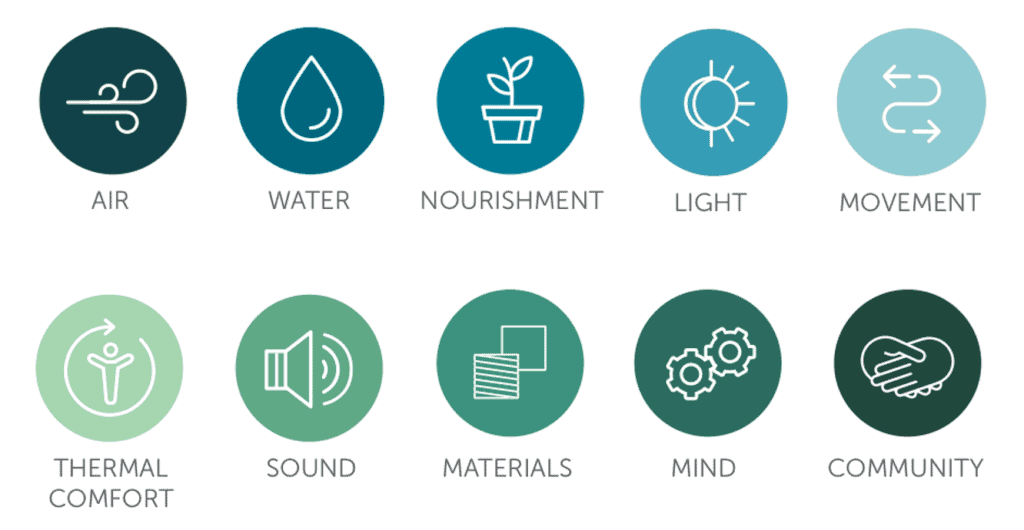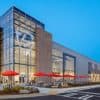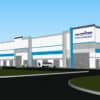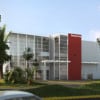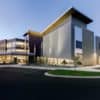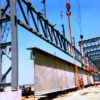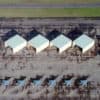Innovation is at the heart of everything we do, and that includes helping our customers and colleagues understand how changes in the industry can create new opportunities.
This is why we’re excited to introduce you to the WELL v2 standard, what it can mean for your projects, and how a steel building solution from BlueScope Buildings can put you on a path to certification.
What Is the WELL v2™ Standard?
In 2014, the International WELL Building Institute (IWBI) launched the first WELL Building Standard. As explained by the IWBI, “WELL applies the science of how physical and social environments affect human health, well-being and performance.”
In other words, WELL is a full-circle, holistic measurement of a building and how people interact with it. In some ways, it’s like the U.S. Green Building Council’s LEED standard, but focused on a building’s impact on human health instead of on the environment. Because of this, WELL also measures many more aspects of construction, development, and occupancy.
Based on the success of the initial WELL standard, the IWBI began piloting WELL v2 in 2018. This version builds on the original WELL ideas and continues to evolve with input from industry leaders.
WELL v2 is evidence-based both in how standards are created and in how it considers certification. Buildings that can prove they meet the WELL v2 standard through data and on-site inspection are eligible to become certified.
What Does WELL v2 Measure?
If there’s a way a building’s construction or function could potentially impact a person’s physical or mental health, there’s probably an applicable WELL v2 standard.
The standards are grouped into ten “concepts”:
- Air (indoor air quality)
- Water (“quality, distribution and control of liquid water”)
- Nourishment (“availability of fruits and vegetables and nutritional transparency”)
- Light (exposure to light and types of lighting environments)
- Movement (promotion of physical activity)
- Thermal Comfort (providing maximal thermal comfort including the ability to meet individual occupant preferences)
- Sound (the ability to identify and meet individual acoustic preferences)
- Materials (reducing exposure to harmful substances)
- Mind (promotion of mental health)
- Community (supportive of health care and an inclusive “culture of health”)
Each concept has one or more “universal preconditions,” which are requirements for certification. Concepts may also include “flexible optimizations with meaningful weightings,” which are optional tracts that building owners can pursue to achieve certification. Some concepts have different standards for owner-occupied buildings than for buildings where the owner occupies only a certain portion of the buildings and leases or rents out the remaining space.
Image from International WELL Building Institute, https://resources.wellcertified.com/
Why Does WELL v2 Certification Matter?
Since 2014, over 2,000 companies, including 100 Fortune 500 companies, have committed to meeting WELL standards. As building owners compete for tenants and companies compete for employees in a strained market, WELL v2 offers an opportunity for differentiation. The ability to promote your building as WELL v2 certified (or on the path to certification) can result in higher revenues – and possibly happier and healthier tenants.
How BlueScope Buildings Can Contribute to WELL v2 Certification
Because of the materials we use, BlueScope Buildings North America (BBNA) can help put your building on a path to WELL v2 certification.
Air
- Our wide range of design capabilities allows for spaces to be mechanically or naturally ventilated. BBNA materials are toluene-free and low-VOC , and the processes we use minimize and manage construction pollution. (Features A01, A03, A04)
Water
- Our water-tight curtain walls and roofs help reduce the risks of mold and pests that can cause respiratory illness. (Feature W07)
Light
- BBNA buildings can be designed with a variety of indoor lighting systems, including skylights and clerestory windows [is clerestory windows accurate?]. Lighting can be controlled to promote visual acuity in all types of settings, from offices to manufacturing floors. Incorporating circadian lighting is also an option. Glare and flicker from electric lighting can be controlled without compromising on other design aspects, and light can be visually balanced. We can also work with your architect and/or builder to support daylight plans, including the use of solar shading. (Features L01-05, L07, L08)
Thermal Comfort
- Our buildings can be designed and constructed to provide acceptable thermal environments that can be verified and adjusted to individual user preference. This includes thermal zoning, radiant thermal comfort, humidity control, and enhanced operable windows with multiple opening modes. (Features T01-03, T05, T07, T08)
Sound
- Our superior insulation systems not only protect against moisture and temperature variances, but they also guard against unwanted noise. Sound-reducing surfaces and noise-reducing flooring can also be incorporated. (Features S03, S05, and S07)
Materials
- Our buildings are free from asbestos, lead and mercury. We’re You have the ability to request low VOC emissions products through your architect and/or builder, which helps with compliance for enhanced material restrictions and optimizations. (Features X01, X05-08)
What’s Involved in Becoming WELL v2-Certified?
The IWBI uses a performance-verified system, which means the building’s composition and performance are “tested” on-site over a period of one to three days. Building owners must also provide data about the materials and processes used and how occupants are interacting with the building.
This means that WELL v2 certification cannot happen before a building is occupied. Since an expected WELL v2 certification is a great way to attract tenants, the IWBI also offers a pre-certification option. This allows an owner to market proposed WELL v2 features to prospective occupants pending a full certification. Once the building is occupied, the owner must complete the full certification process with on-site testing.
Image from International WELL Building Institute, https://standard.wellcertified.com/
When Should Owners Start Thinking About WELL v2 Certification?
Because the WELL v2 standard focuses on core elements of a building, it’s important to decide if you want to pursue certification before you begin construction. Understanding the WELL v2 requirements and discussing with your architect and/or building team during the design and planning phases will ensure that none of your decisions will prevent you from becoming certified if you choose.



